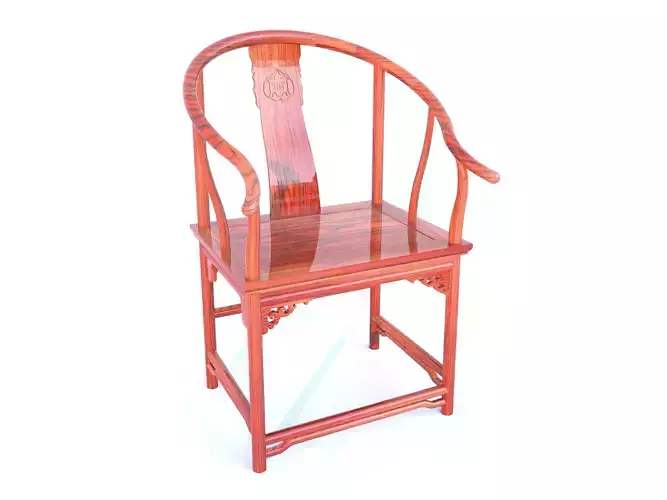1/30
The round-back armchair (quanyi) is one of the most iconic creations in Ming dynasty furniture. Ming-style round-back chairs are known for their simple, elegant forms and smooth, flowing lines. The craftsmanship achieved an extraordinary level of refinement and sophistication. The concept of “heaven is round and earth is square” — a fundamental cosmological view in traditional Chinese culture — not only influenced architecture but was also deeply integrated into furniture design.
The quanyi embodies the combination of round and square elements: round at the top, square at the bottom, with roundness as the dominant theme. In Chinese symbolism, the circle represents harmony and happiness, while the square signifies stability and serenity. This chair form perfectly expresses that philosophy.
From an aesthetic perspective, the Ming-style quanyi is admired for the beauty of its shape and lines, which echo the spirit of Chinese calligraphy and the freehand style of traditional ink painting. The visual effect of its abstract beauty aligns well with modern aesthetic sensibilities.
The armrest's angle with the backrest, the graceful curvature of the chair, and the height of the seat — these three proportional aspects combine in perfect harmony, constructing an ideal space for artistic imagination.
The quanyi, or round-back armchair, is a type of chair where the curved backrest is seamlessly connected to the armrests, flowing in a continuous line from high to low. Its design is graceful and rounded, with a full and sturdy form. As one of the most distinctive traditional chair types in Chinese culture, the quanyi allows the sitter’s arms to rest naturally along the circular armrests, providing a high degree of comfort — a key reason for its enduring popularity.
The quanyi (round-back armchair) originated in the Tang dynasty. Due to its curved structure, it was naturally suited to be crafted from rounded wooden materials. Most quanyi designs followed a minimalist approach, with smooth, unadorned surfaces, featuring only a simple carved or openwork motif at the center of the backrest. The backrest was typically shaped in an “S” or “C” curve, modeled on the natural curvature of the human spine — a classic example of the ergonomic and scientific design found in Ming-style furniture.
During the Song dynasty, Cai Jing, who served as Chancellor and Grand Preceptor, once leaned back while seated on a quanyi and had his headscarf fall off. In an effort to flatter him, a subordinate official designed a modified version of the quanyi with a raised and slightly reclined backrest to support the head — this chair later became known as the Taishi Chair (Grand Preceptor's Chair). However, by the Qing dynasty, the term “Taishi Chair” had become ambiguous and was no longer limited to that specific variation from the Song period. Many chairs with both a backrest and armrests came to be referred to by this name.
By the Qing dynasty, there was a growing preference for elaborate ornamentation and ornate designs. The once-simple quanyi underwent significant changes, incorporating features such as openwork carved armrests, pedestal bases, and claw-shaped feet. This transformation gave rise to a more luxurious style of quanyi, which, due to its origins in the imperial palace, later became widely known as the “Palace Chair.”
REVIEWS & COMMENTS
accuracy, and usability.






























